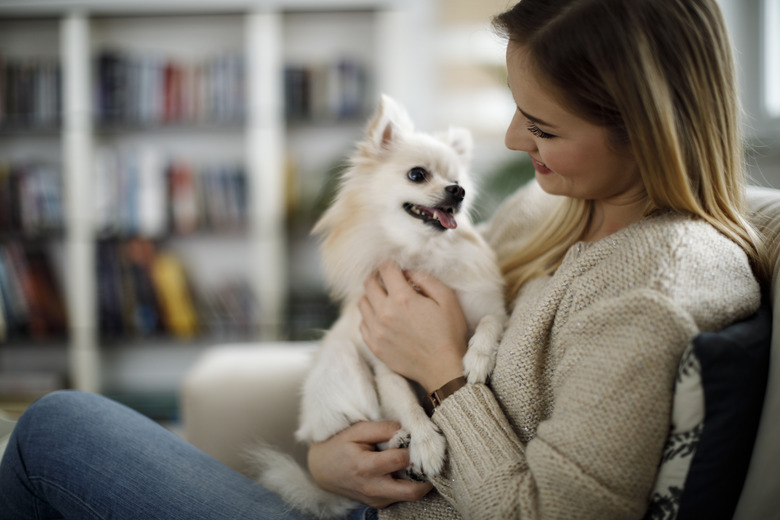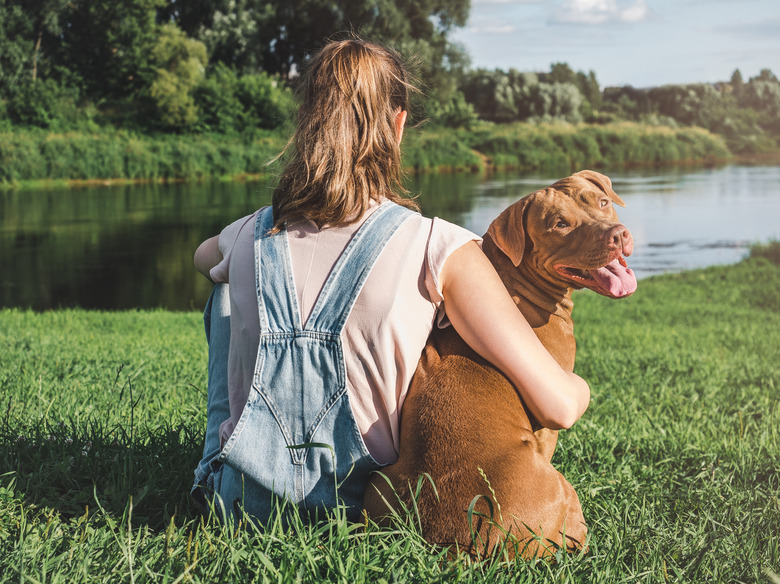What Are The Signs Of A Female Dog In Heat?
What Are the Signs of a Female Dog in Heat?
There's something special about female dogs. They're fiercely loyal, they can be unbelievably sweet, and they definitely have their very own personality. When you have a female dog, though, there's one extra bit of care about which you need to be familiar. If your dog isn't spayed, then being able to recognize the signs of a dog in heat can help you to keep her safe and healthy. We spoke with Dr. Ingrid Taylor, a veterinarian with 16 years of experience in general clinical and emergency practice and public health, to find out more about the signs of a female dog in heat.
How long does a dog stay in heat?
How long does a dog stay in heat?
The good news is that dogs don't go into heat too frequently, so you don't need to worry about the behavior of a female dog in heat all that often. The best step you can take for her is to spay before your dog's first heat. Not only is this best for the overall health of your dog but it will eliminate the chance of accidental pregnancy, which can be physically difficult for any dog. It also helps to fight against pet overpopulation and helps ensure that pets have loving homes and aren't left homeless. "It is not necessary for a dog to go through a heat cycle prior to being spayed," explains Dr. Taylor.
Your female dog will experience her first heat cycle when she reaches sexual maturity, which is around 6 months of age. Dogs come into heat about twice per year, though small dog breeds may experience three heat cycles per year. Larger breeds and giant breeds may only have one heat cycle every 12 to 18 months. Young dogs may initially experience irregular cycles.
Your dog's heat cycle will last for about two to three weeks on average. The exact duration of her heat cycle can vary, so it's best to know how to identify signs of a dog in heat to better monitor your dog.
What are the symptoms and signs of heat?
What are the symptoms and signs of heat?
When your dog goes into heat, she will progress through three stages: proestrus, estrus, and diestrus. It's important to note that if you have your dog spayed, she will not go through these cycles at all. The different heat stages will bring about different heat symptoms and behavioral changes in your dog, so knowing what to look for can help you track the progression of your dog's heat cycle.
Proestrus symptoms in dogs
Proestrus symptoms in dogs
The earliest stage of heat is the proestrus stage, which lasts about nine days. Dogs in proestrus may show swelling of the vulva. Your dog may hold her tail close to her body and may be clingy and stick by your side. She may produce more urination to display that she is ready.
You may see some bloody discharge from her vulva during this stage. She might also exhibit a swollen vulva. Some dogs are fastidious about cleaning themselves, though, so these are symptoms that you shouldn't necessarily rely on.
During proestrus, your dog will not allow a male to mate. Male dogs will be attracted to your dog, but she may react aggressively if they try to mate. The proestrus stage allows a female dog's body to get ready for mating, but her body won't be completely ready until she enters the second stage of heat.
Estrus stage symptoms and diestrus symptoms in dogs
Estrus stage symptoms and diestrus symptoms in dogs
When your dog enters estrus, she will be ready to mate. The discharge from her vulva may change from pinkish to a clear or brown color. As your dog's hormones fluctuate, she'll start to move her tail position to the side, signaling to male dogs that she is ready to breed.
During estrus, which lasts about nine days, female dogs produce pheromones. Male dogs can smell these pheromones from miles away and are attracted to the scent. When your dog is in estrus, you need to be particularly careful about her safety around other dogs since male dogs will be interested in her, and she will usually allow them to mate with her. A male dog's behavior can become aggressive when they are around a dog they want to mate with.
It's best for pet parents to keep their dog separated from other dogs while she's in estrus. This is usually the best way to keep her from potentially being involved in a dog fight or having an unwanted pregnancy, and it's important to be extra vigilant about her safety during this time.
During the final stage of heat, diestrus, your dog will no longer be interested in mating. Her swollen genital area will gradually return to its normal size, and the vaginal discharge will stop.
What might be concerning about dog in heat symptoms?
What might be concerning about dog in heat symptoms?
There are risks for dogs who aren't spayed, such as pyometra. Pyometra is an infection of your dog's uterus, and it can be very serious. It's important to spot the symptoms of pyometra early and immediately seek veterinary help for your dog.
Pyometra results because of a combination of conditions that a dog's estrus cycle creates. While your dog is in estrus, your dog's progesterone levels stay elevated for about two months. This causes the lining of the uterus to thicken, preparing for a potential pregnancy.
If your dog doesn't get pregnant the first time she enters a heat cycle or a few heat cycles thereafter, the uterine lining gets thicker, and cysts sometimes develop. The thickened lining then secretes fluids, making an environment that is ideal for growing bacteria. This environment, paired with the fact that your dog's progesterone levels don't allow the uterine muscles to contract and expel the fluids, can lead to infection.
Pyometra risk for your dog
Pyometra risk for your dog
Pyometra most often occurs in sexually intact older dogs, though an unspayed female dog of any age can experience the condition. "The easiest way to avoid the risk of pyometra, a life-threatening and expensive condition, is to have your dog spayed early in life," says Dr. Taylor.
In some cases, you may notice pus draining from your dog's vagina if she has developed pyometra. Your dog may also have a fever, be lethargic, or be depressed. In other cases, the pus cannot drain to the outside and results in a distended abdomen, and she will be listless and depressed and may vomit or have diarrhea. Your dog may drink more water regardless of whether a pus discharge is present.
Pyometra progresses quickly, and it is vital that you seek veterinary help immediately. Left untreated, this infection can kill your dog. Generally, your veterinary will perform a spay and remove your dog's infected uterus and ovaries. "Your dog may be given antibiotics post-surgery to help clear up any lingering infection," says Dr. Taylor.
Preventing pregnancy in your dog
Preventing pregnancy in your dog
If your dog is in heat, she should stay away from male dogs for at least three to four weeks. This means no trips to dog parks, doggie day cares, or other situations where your dog may interact with male dogs. If your female dog lives with intact dogs in the house, it can be stressful for all of the dogs, so it's best to keep them separated while your female is in heat. Doggie diapers can also help as an extra barrier against pregnancy. If you have relatives or friends nearby, it may be best to send one of the dogs to live with them until your female's heat reproductive cycle is over.
The bottom line
The bottom line
The most effective way to prevent pregnancy in your dog is to have her spayed. If your dog is actively in heat, your veterinary may suggest that you wait until she is out of heat before performing the surgery. Spaying a dog is a relatively routine surgery, and it will prevent your dog from becoming pregnant and from going into heat in the future. Additionally, spaying your dog reduces her chances of developing mammary cancer and eliminates the chance of her developing pyometra. "Spaying your female dog will also improve her quality of life and allow her to enjoy her time with you and her dog companions," says Dr. Taylor.


